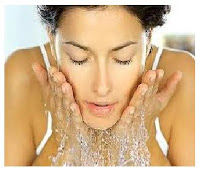Acne Treatment and Medication

Acne treatments work by lowering oil production, accelerating skin cell turnover, battling bacterial infection, and lowering inflammation. With most prescription acne medications, you might not see results for four to eight weeks, and your skin might become even worse before getting better.
Your physician or dermatologist might advise a prescription medicine you administer on to your skin or take by mouth (topical or oral). Oral medications for acne must not be utilized while going through pregnancy, even more so during the first time period. Forms of acne treatments consist of:
Over-the-counter topical medications
Acne creams might dry up the oil, eliminate bacteria and encourage dropping off of lifeless skin cells. These lotions are usually mellow and incorporate benzoyl peroxide, resorcinol, sulfur, salicylic acid or sulfur as their main additive. These compounds can be beneficial for very light acne. These acne medications might root initial side effects — like skin inflammation, dryness and peeling — that usually get better, following the first month of recovery.
Topical treatments attainable by prescription
If your acne doesn't improve with OTC treatments, consider meeting with your dermatologist to get a more effective cream. Tretinoin, adapalene and tazarotene are examples of topical prescription compounds containing vitamin A. They work by supporting cell turnover and countering blocking of the hair follicles. A series of topical antibiotics are also available. They work by eliminating extra bacteria.
Generally, a mixture of these products are needed to gain favorable results. A bunch of benzoyl peroxide and antibiotic mixture medications are available, as well as diverse dose mixtures of benzoyl peroxide and clindamycin and benzoyl peroxide and erythromycin. Dapsone gel is a current acne treatment that's specifically effective in treating irritable acne. Prescription topical treatments for acne might carry skin side effects, like stinging, burning, redness or flaking. Your physician might advise ways to lower these side effects, such as using a slowly raised dose, washing off the medication after a brief use or changing to an additional medication.




